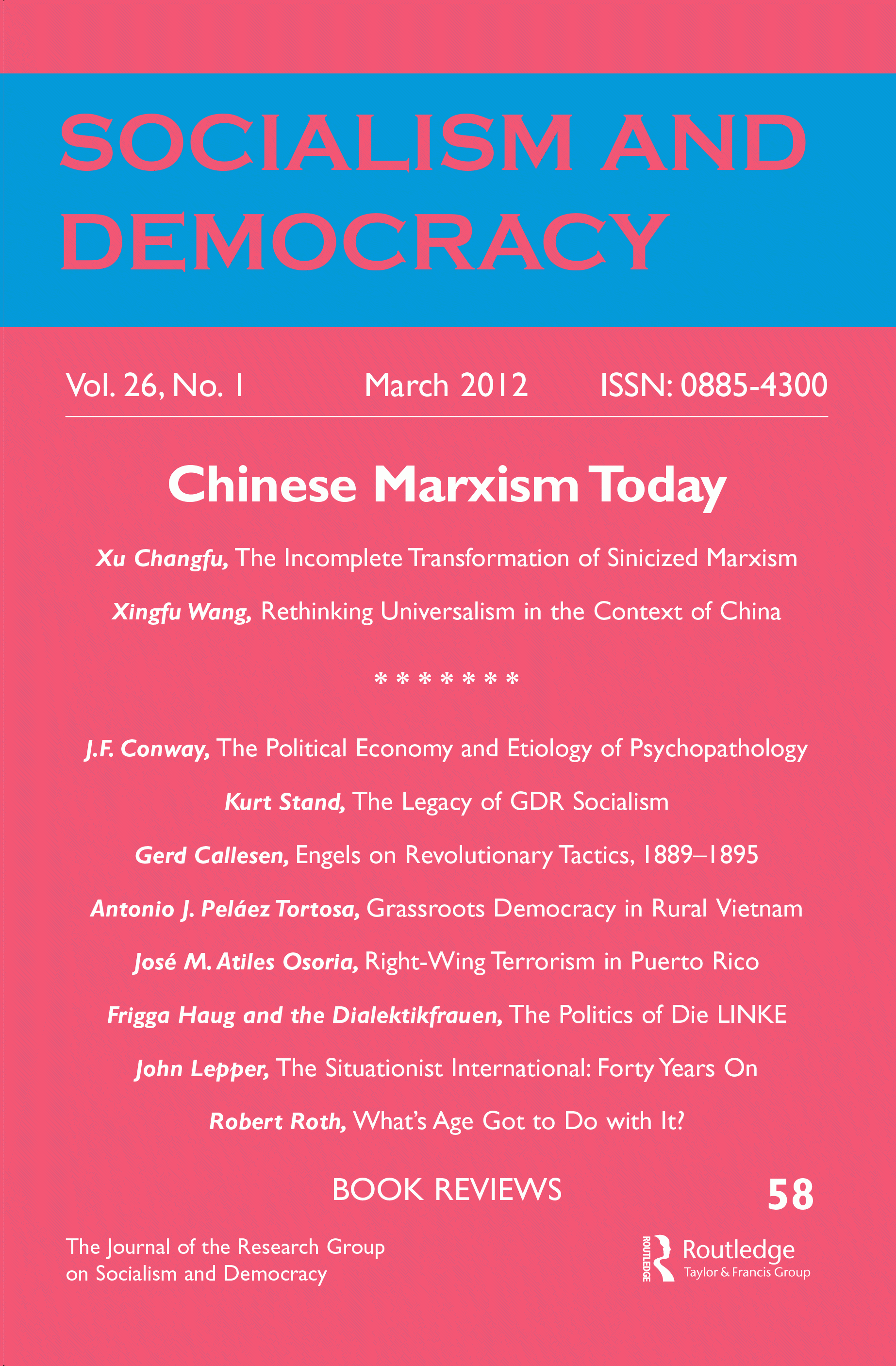Marcello Musto, ed., Karl Marx's Grundrisse: Foundations of the Critique of Political Economy 150 Years After (New York: Routledge, 2008)
The existence of the Grundrisse was unknown for more than half a century after Marx's death, and its texts were not available until almost one century after they had been written. Yet their impact has been momentous. The Grundrisse was first published in the midst of Stalin’s ascendancy; it became a point of reference in endeavors to liberate Marxist theory and practice from the Stalinist paralysis. Marcello Musto's trenchant book contributes to this liberation. It is also very timely. It provides its readers with a fresh opportunity to see the ongoing global crisis through the lenses of these texts, which Marx wrote during the worldwide economic crisis of 1857-8.
For Marx himself, the period was one of personal sickness and destitution. But the economic crisis stimulated him to sharpen his examination of political economy, which he saw as finally creating the conditions for a new revolutionary period. The Grundrisse manuscripts, reflecting the systematic studies which resulted in Marx’s magnum opus, Capital, stand out among the most sophisticated analyses of capitalist economics. But not only that. In these manuscripts, Marx delved extensively into questions of method and provided an explicit account of the guiding principles of his research. His search for the correct method of presenting scientifically the real movement of capital was not merely a matter of imposing Hegelian parlance on the study of economic relations. On the contrary, Marx was “one of the leading political and economic journalists of his time” (Krätke, Chapter 10), and his search for the proper abstract categories to understand the world was accompanied by incisive observations on the rich totality of relations.
The life of the Grundrisse has been as interesting as the circumstances of its birth. Kautsky published the Introduction, presenting it as a “fragmentary draft” only in 1903. In 1923, David Ryazanov discovered the Grundrisse notebooks. The first edition in German appeared in 1939; the edition that included the whole notebooks was published in 1953. However, one had to wait until 1973 in order to read a complete English translation. The first examination of the text was Roman Rosdolsky’s The Making of Marx’s ‘Capital’ (in German), which set the framework for subsequent interpretations. Martin Nicolaus’s ‘The Unknown Marx’ appeared in New Left Review in 1968, popularizing the Grundrisse in the Anglophone world. Disseminated worldwide in many languages, the Grundrisse was read and interpreted, becoming a point of reference to further illuminate Marx’s thought on a variety of issues such as his relation to Hegel, the analysis of modernity, crisis theory, etc.
Musto’s volume is the most recent contribution to this corpus and a very important one. Its chapters discuss current theoretical and empirical issues in relation to the Grundrisse. It has already been translated into Farsi and Chinese, and its Japanese translation is forthcoming. The volume consists of three parts, following Eric Hobsbawm’s Foreword. The first part brings together eight chapters, each utilizing the Grundrisse to examine a different issue. The chapters that stand out are: Terrell Carver on the conception of alienation in the Grundrisse, Ellen Meiksins Wood on Marx’s understanding of pre-capitalist history and the transition from feudalism to capitalism, John Bellamy Foster on the ecological contradictions of capitalism, and Iring Fetscher on Marx’s sketch of post-capitalist society in the Grundrisse.
The second part of the book consists of three chapters that situate the Grundrisse in its historical context. Musto gives a rare bibliographical sketch of Marx during the years he composed the Grundrisse. Subsequent chapters by Michael R. Krätke are no less interesting. In the first, he focuses on Marx as a leading journalist of his time. This chapter is not merely bibliographical, as it establishes links between the content of Marx’s works and the context in which they were written. In the other chapter, Krätke brings our attention to the crisis situation of 1857-8, exploring how Marx conceptualized the crises of capitalism and related them to the revolutionary transition to socialism.
The third and final part of the volume presents histories of the dissemination and reception of the Grundrisse throughout the world. It describes the research undertaken in all the countries in which the Grundrisse has been translated. There are twenty-one chapters, each containing a bibliography of the complete and partial editions of the Grundrisse as well as the critical literature on it. This part especially reflects Musto’s remarkable ability as an organizer, who brought together Marxists from many parts of the world for this project.
The book, now available in paperback, is a “must” for every student of Marx. Its method of situating texts in their historical context will moreover be useful not only to students of Marx and Marxism, but to anyone interested in the social history of political theory.
Yasin Kaya PhD student in Political Science York University, Toronto yakaya@gmail.com

